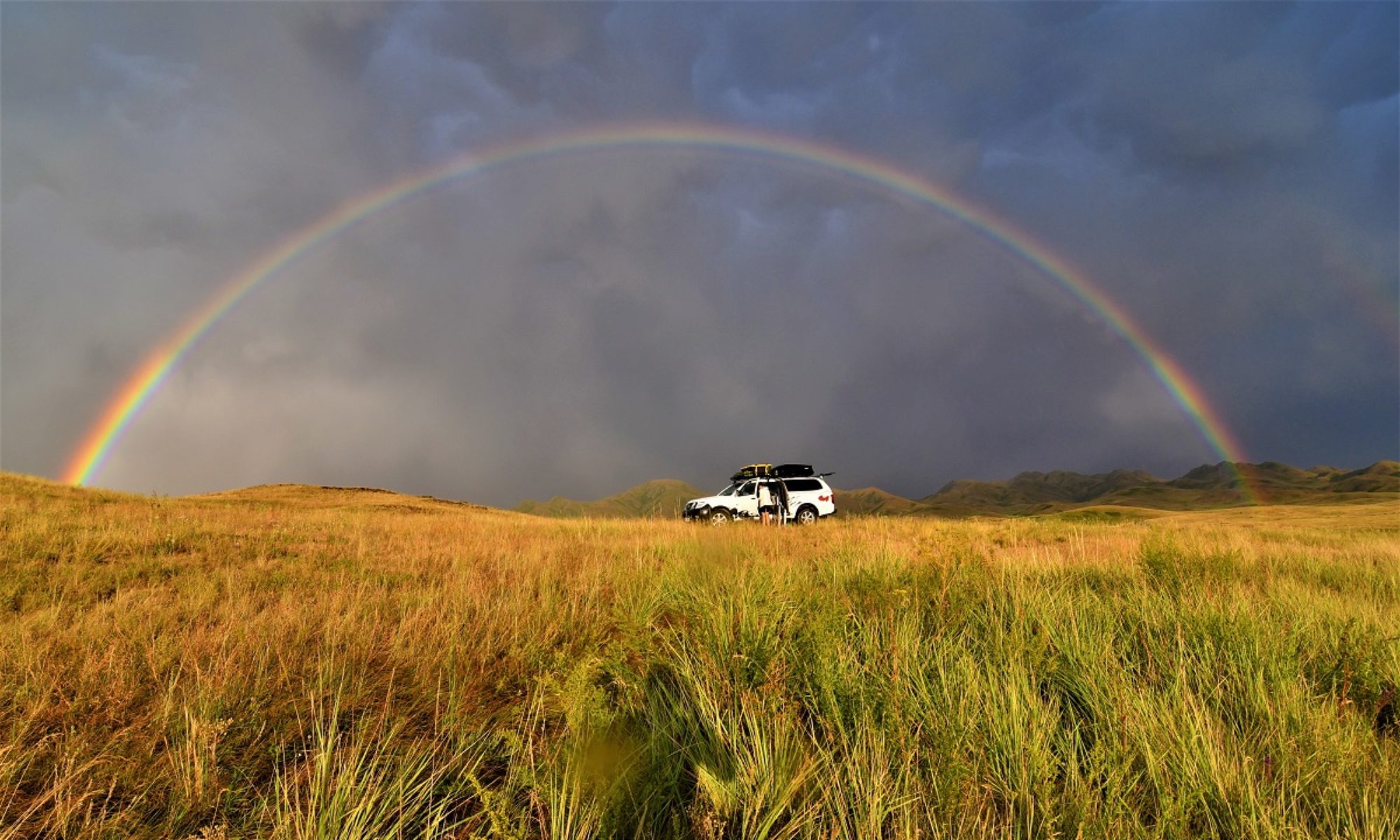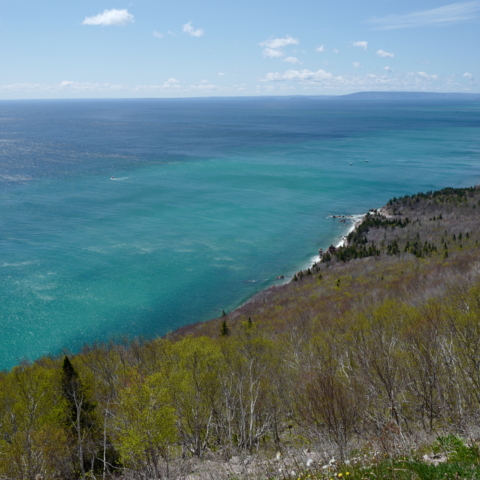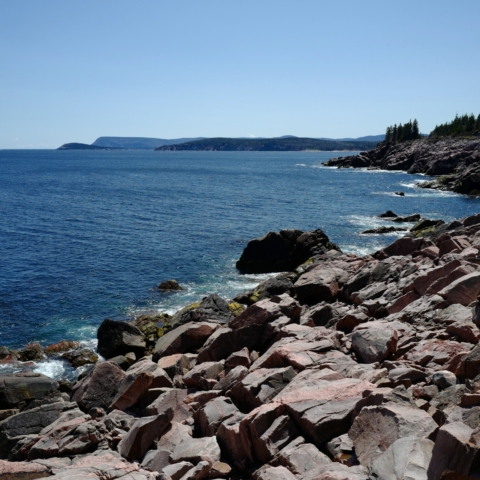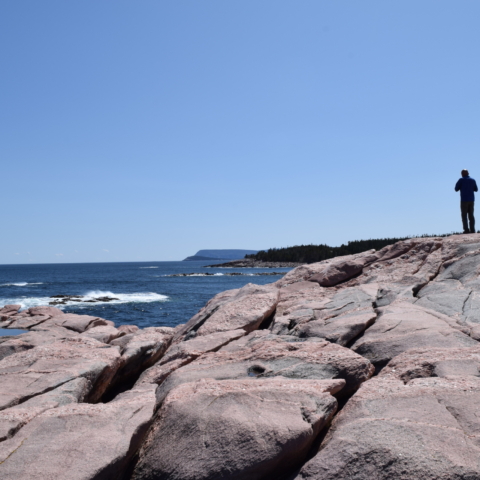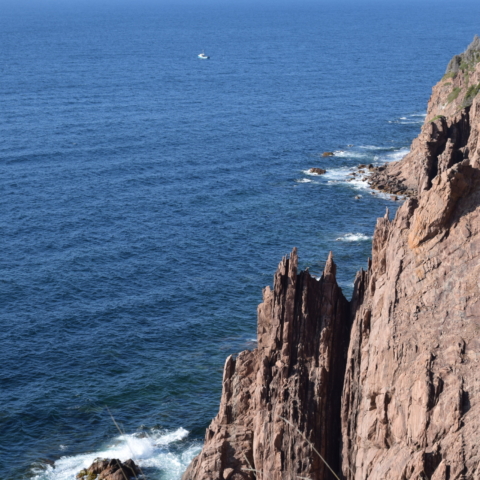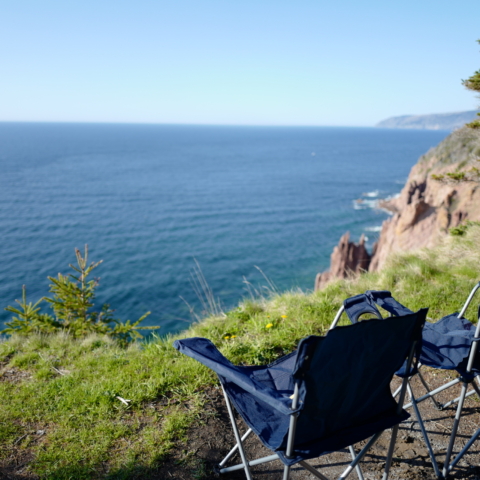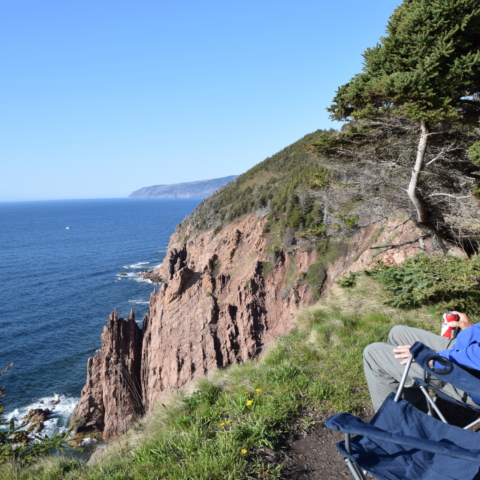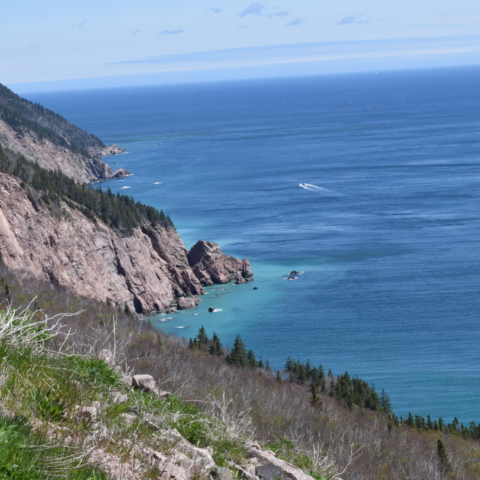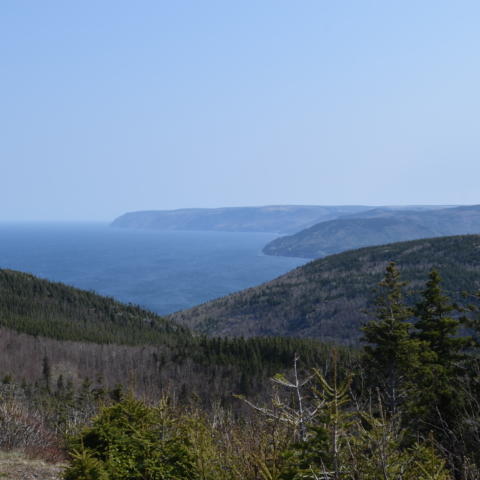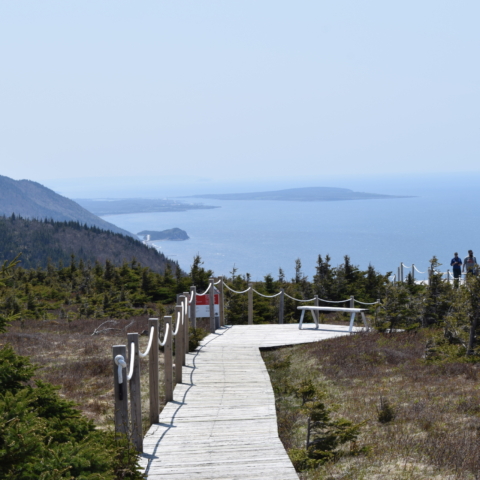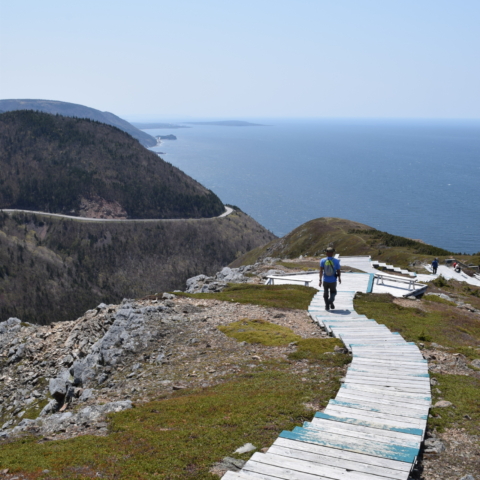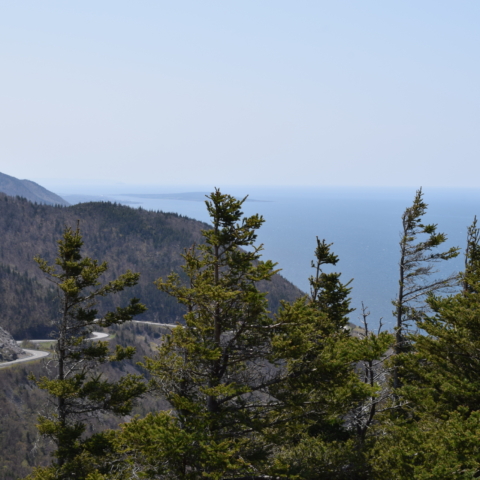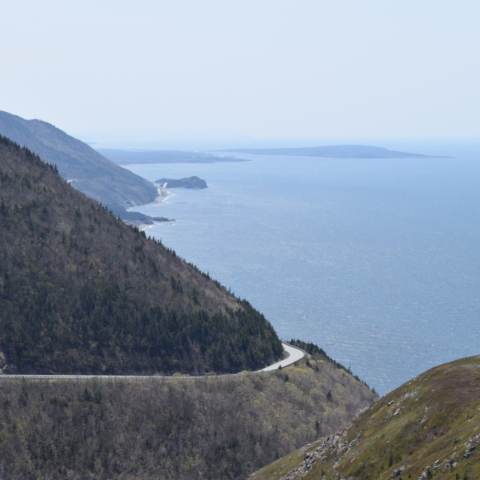May 26 – May 29, 2023
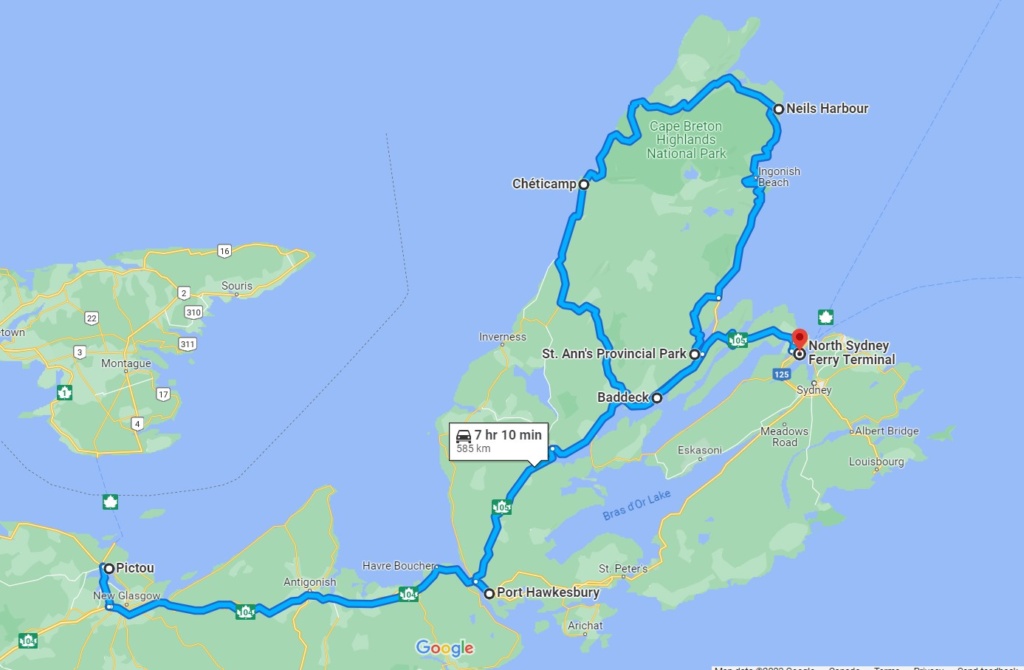
Cape Breton Island takes its name from its easternmost point, Cape Breton. At least two theories for this name have been put forward. The first connects it to the Bretons of northwestern France which discovered Canada. A Portuguese mappa mundi of 1516–1520 includes the label “terra q(ue) foy descuberta por Bertomes” in the vicinity of the Gulf of St Lawrence, which means “land discovered by Bretons”.
The second connects it to the Gascon fishing port of Capbreton. Basque whalers and fishermen traded with the Miꞌkmaq (first Nation) of this island from the early sixteenth century.
We picked up the Cabot Trail, a 185-mile (298-kilometer) loop around a sizeable chunk of the island, at Baddeck, a lively little town. The trail is named after John Cabot (Giovanni Caboto – 1450-1500) an Italian navigator and explorer, commissioned by Henry VII of England to search for unknown lands. His 1497 voyage is the earliest-known European exploration of coastal North America since the Norse visits to Vinland in the eleventh century.
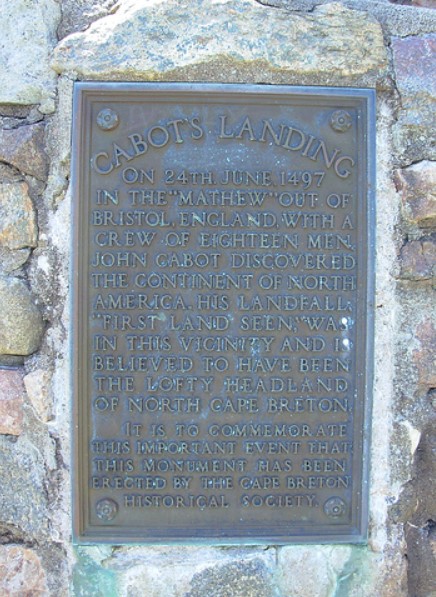
The island has a tumultuous history. The local Mi’kmaq peoples began trading with European fishermen when the fishermen began landing in their territories as early as the 1520s. England and France had a tug of war over this territory, even Scotland was involved. The first European settlement was French, in 1629 at Baleine (now Englishtown). The island was then called “Ile Royale”. Île Royale remained formally part of New France until it was ceded to Great Britain by the Treaty of Paris in 1763. It was then merged with the adjacent British colony of Nova Scotia (present day peninsular Nova Scotia and New Brunswick). Acadians who had been expelled from Nova Scotia and Île Royale were permitted to settle in Cape Breton beginning in 1764, and established communities in northwestern Cape Breton, near Cheticamp and southern Cape Breton.
This has resulted in a rich mix of Gaelic, French and English heritage, not to forget the Mi’kmaqi ( First Nation) who were the first inhabitants ! Road signs are in both English and Gaelic and many interpretative panels at places of interest are now in 3 languages: French , English and Mi’maq.
The weather being so changeable, we try and time our visits when the forecast is good. The Cabot Trail goes through the Cape Breton Highlands National Park and we spent a couple of days in the Park.
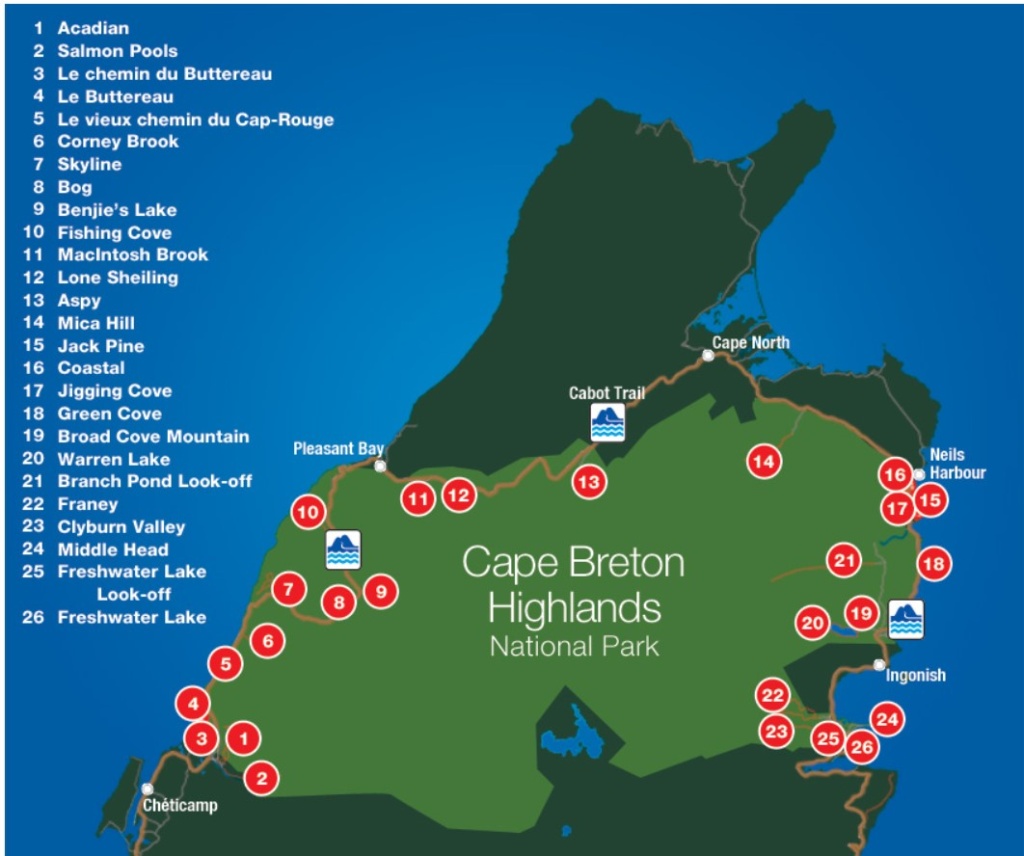
We did a few hikes and enjoyed the scenery.
Coastal views:
[Click on picture to open gallery]
Skyline Trail:
[Click on picture to open gallery]
We exited the National Park near Cheticamp, a traditional Acadian fishing village
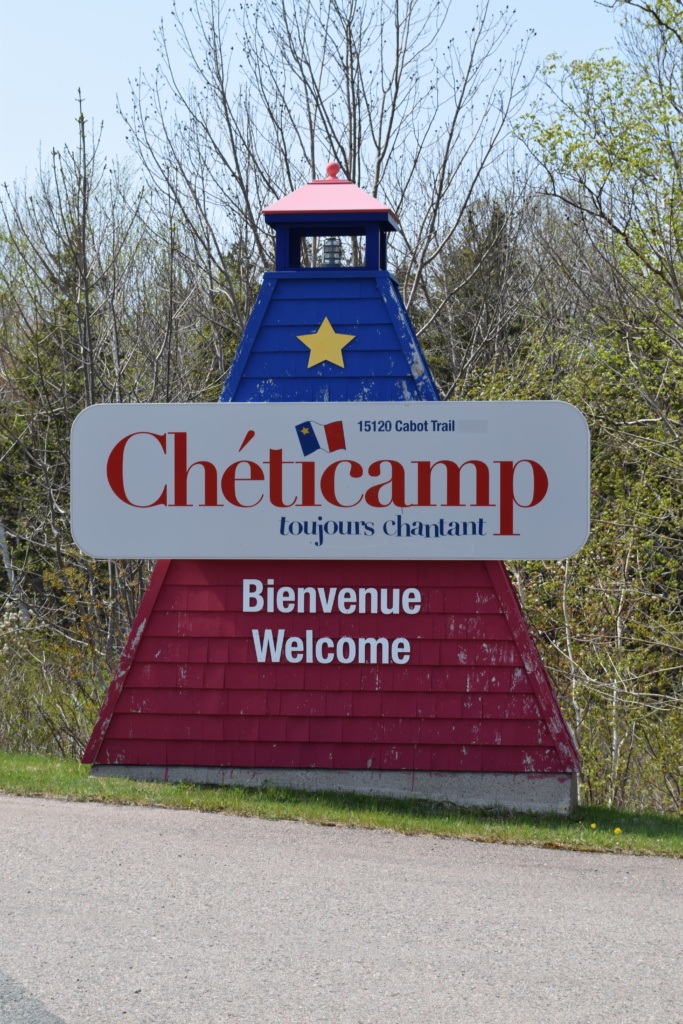
and made our way back to Baddeck to complete our loop.
Colourful motel on our way
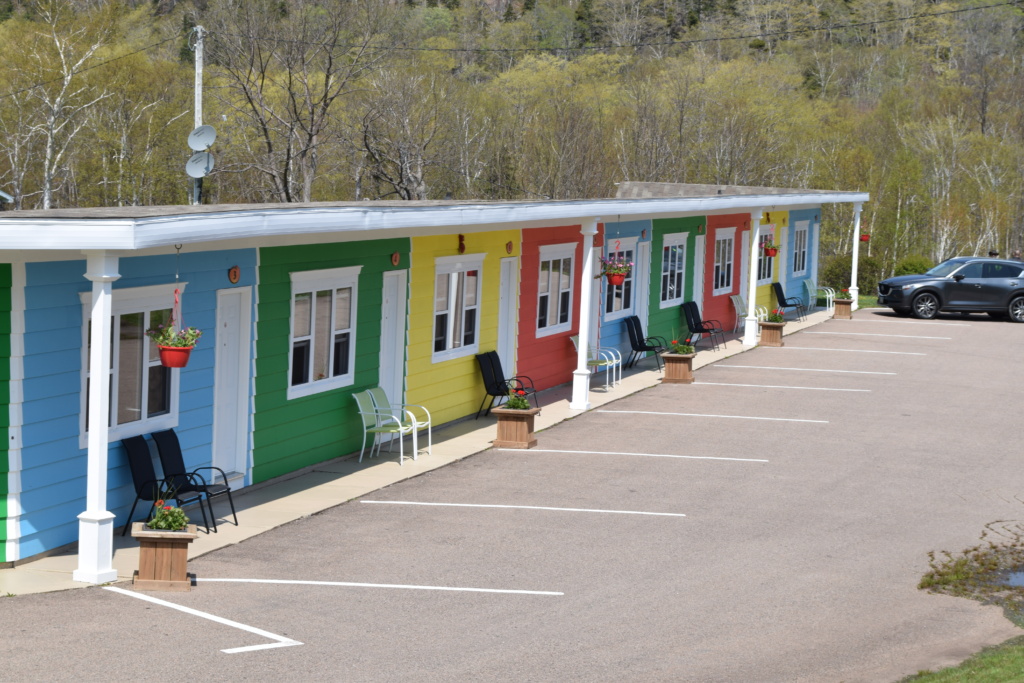
We have booked the ferry to New Foundland for the night crossing leaving North Sydney at 11:45pm on 29th May!
